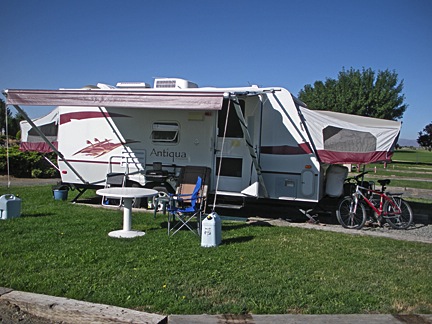I am a stranger.
This morning, as part of my e-mail routine, I checked the list of new Twitter followers. As I’ve said here and elsewhere, I don’t follow many people on Twitter, but I do check out all the new followers I get. Although most are spam these days, occasionally I find one interesting enough to reciprocate the follow.
Today’s batch included one that made me stop and think. About 75% of this person’s recent tweets were about the deteriorating health of her mom. Heart failure, lung problems, pneumonia. She was tweeting from the hospital, she was tweeting after discussions with doctors. She was keeping her followers apprised of what certainly seemed like the impending death of her mother, right down to details about how her father was taking it.
There are a few things that struck me about this.
Should strangers be expected to care?
First, I find it hard to believe that a good percentage of her 1,000+ followers really care enough about her and her life to want to read the grim details of the family health problem unfolding for her and being broadcast on Twitter.
Sure, if my mom went into the hospital, I’d likely mention it once or twice on Twitter. But if she got really sick and I was spending a bunch of time at the hospital as she lived her last days, I don’t think you’d find many blow-by-blow tweets about it. In fact, I don’t think you’d find many tweets from me at all. I’m not very close to my family, but I’m close enough to spend important time with them and to keep it mostly private. I have 700+ followers on Twitter and I’m positive that very few of them need (or want) to know about the things in my life that are real downers.
On the other side of the coin, I’ve followed folks on Twitter who have tweeted about their health problems or the health problems of family members. That’s normal; health problems are a part of life. But if any of them became absolutely consumed with the problem and tweeted mostly about that, I had to take a hard look at the situation. How well do I know this person? What can I do to make it better? How do I feel reading about this day after day, alongside tweets with links to yodeling cats, health care reform analysis, and cartoons? If the person was a stranger and I’d already said the comforting things I could and the tweets were making me feel like shit every day, I’d stop following. I’d have to. I cannot allow my emotional well being to be dragged down by the misfortunes of strangers who, for some reason, need to make their physical or emotional pain a part of other people’s lives.
So no, I’m not saying I stop following people who complain about a bad back or tweet briefly to mention a loved one with a health problem. But if I don’t know you and that’s just about all you tweet about, please don’t blame me for turning off the volume and getting on with my life.
I guess my point is, there’s just some things you shouldn’t expect strangers to deal with.
Can a person’s priorities be this fucked up?
The other thing that struck me is that this person was going through an ordeal with doctors and hospitals and family members, yet she still found time to follow me on Twitter. Are her priorities fucked up or what?
Now you might suggest that she followed me using some kind of automated tool. Lots of people do that for reasons that are not always in the best of interest of the Twitter community. (I don’t think she is a spammer, though.)
When I checked the time-stamp on the follow notification, I saw that she began following me at 5:47 AM today. My last tweet last night was before 10 PM and my first tweet this morning was after 6 AM. So I hadn’t tweeted anything that could trigger an automatic follow at that time of day.
So that leads me to believe that she’s surfing the Web, reading tweets, and interacting on the Internet. She’s somehow found my Twitter address and has decided to follow me.
Now.
While her mother is potentially on her deathbed.
Or is the whole family thing exaggerated? Just a story to make her sound more interesting to people who like to read that sort of thing?
I really don’t know what to think.
I’m not knocking anyone…Just trying to understand.
Please understand that I’m not writing this to knock a specific person dealing with a family problem. I’m just floored by the whole situation, trying to understand how someone’s take on “social networking” can be so incredibly different from mine.
And I’m wondering how off-base my thoughts on this matter are. How do you feel about strangers you meet on social networking sites detailing the sad parts of their lives? What is it that you want from your social networking activities?




